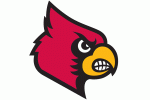From smarter training regimens to stricter health protocols, the world of professional football is undergoing a quiet revolution. In the NFL, it’s more than just about winning the next Sunday; it’s about staying in the league for seasons to come.
Athletes are still pushing their bodies to the limit, but there’s a heightened awareness of the risks that come with the game. Behind the high-stakes playoff runs and viral highlight reels, there is a growing emphasis on recovery, mental health, and injury prevention.
Coaches, medical teams, and league officials are rethinking old routines, looking for ways to extend careers and improve quality of life. The goal? Achieve peak performance without burning out. This shift is quietly reshaping the future of the NFL- one small, strategic change at a time.
Mental Health Resources Are Becoming Standard
Conversations around mental wellness are becoming a regular part of life in NFL locker rooms. From managing performance pressure to preparing for life after football, players are opening up, and teams are fully on board.
Since 2019, the NFL and NFL Players Association have made mental health a key priority, AP News reports. Each franchise is now required to have a licensed behavioral health clinician on staff.
Moreover, today, the NFLPA’s Clinician Directory includes 107 professionals, including psychologists, psychiatrists, counselors, and more. These resources are more than just a safety net. They’re becoming a key part of player development.
A Shift Toward Safer Pain Management
One of the most significant, and quieter, changes in the NFL is how teams approach pain relief. Data from the NFL’s Prescription Drug Monitoring Program shows a shift in pain management. In 2021 and 2022, less than 3% of pain medications prescribed to players were opioids.
Over 90% of players received no opioid prescriptions at all during those seasons. Instead, teams are turning to safer alternatives like NSAIDs (such as ibuprofen or celecoxib), topical therapies, acupuncture, and cupping.
It’s a stark contrast to previous decades, where retired players often revealed heavy reliance on opioids during their careers. Of those, 71% even reported misusing the drugs.
Misuse often leads to addiction, and recovering from opioid dependency is a long, difficult journey. This is not only because of withdrawal symptoms, but also because some treatment medications carry serious risks.
Suboxone, for instance, a common drug used in opioid recovery, has come under legal scrutiny, as noted by TruLaw. Lawsuits allege that Suboxone caused severe dental and gum damage.
Legal experts estimate that if the claims are proven, the compensation could be substantial. The Suboxone lawsuit payout per person could range from $10,000 to over $500,000, depending on the severity of each case.
It’s no surprise that the league has made a strong pivot toward safer pain relief methods. This shift helps protect both the bodies and futures of its athletes.
Advanced Recovery Tools Are Being Used League-Wide
Across the NFL, cutting-edge technology is playing a bigger role in keeping players healthy and game-ready. One of the most innovative tools in use today is the Digital Athlete. It is an advanced AI-powered system designed to predict and help prevent injuries.
By analyzing video footage and data from practices, games, and workouts, the platform creates a 360-degree view of each player’s physical demands. Using millions of simulations powered by AWS, it identifies when athletes are most at risk. This helps coaches and trainers fine-tune training loads, recovery plans, and injury prevention strategies.
All 32 teams have access to this platform, using it to make smarter decisions based on daily training metrics and league-wide benchmarks.
Concussion Protocols Are Working
Gone are the days when a player could “shake it off” after a headshot and get right back on the field. Today’s concussion protocol is strict, and it’s saving lives and careers.
Independent neurologists now have the authority to pull players, and teams must follow return-to-play guidelines that include cognitive testing and symptom monitoring. Though no system is perfect, the increased transparency and enforcement have raised the standard of care significantly.
And the results speak for themselves. The NFL reported a 17% drop in concussions during the 2024 season compared to 2023. It marked a historic low across both practices and games.
FAQs
What role does yoga or mindfulness play in an NFL player’s routine?
Yoga and mindfulness exercises have become increasingly popular among NFL players for flexibility, injury prevention, and stress reduction. Teams like the Seattle Seahawks have even integrated weekly mindfulness sessions into their training schedules. Some players credit these sessions for improved focus and emotional resilience.
How do NFL players deal with the emotional toll of career-ending injuries?
Career-ending injuries can be devastating. The NFL and NFLPA offer counseling services, career transition programs, and support groups for former players. Some also stay connected to the game through coaching, broadcasting, or mentoring younger athletes, which helps with the emotional adjustment.
How is wearable technology used in NFL training and recovery?
Wearables like GPS trackers, heart rate monitors, and sleep sensors are widely used in the NFL. These devices collect real-time data on exertion, workload, recovery status, and even sleep quality. This allows coaches and trainers to tailor training regimens and prevent overtraining or fatigue-related injuries.
Overall, the NFL’s culture of “tough it out” isn’t going away entirely, but it’s evolving. Teams are starting to treat players not just as athletes but as long-term investments.




















